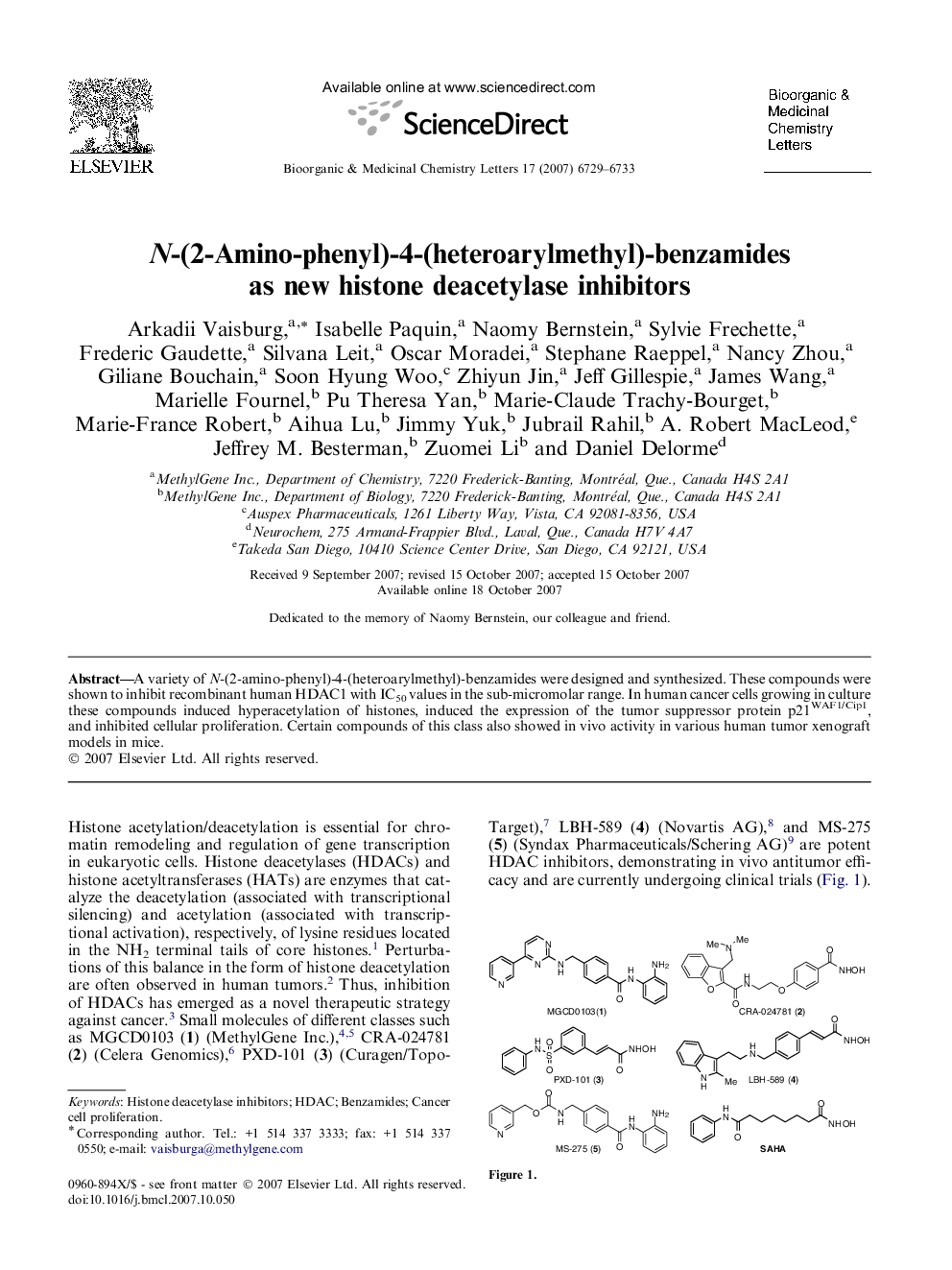| Article ID | Journal | Published Year | Pages | File Type |
|---|---|---|---|---|
| 1376042 | Bioorganic & Medicinal Chemistry Letters | 2007 | 5 Pages |
A variety of N-(2-amino-phenyl)-4-(heteroarylmethyl)-benzamides were designed and synthesized. These compounds were shown to inhibit recombinant human HDAC1 with IC50 values in the sub-micromolar range. In human cancer cells growing in culture these compounds induced hyperacetylation of histones, induced the expression of the tumor suppressor protein p21WAF1/Cip1, and inhibited cellular proliferation. Certain compounds of this class also showed in vivo activity in various human tumor xenograft models in mice.
Graphical abstractA variety of N-(2-amino-phenyl)-4-(heteroarylmethyl)-benzamides of general structure 10 were designed, synthesized, and evaluated as histone deacetylase (HDAC) inhibitors.Figure optionsDownload full-size imageDownload as PowerPoint slide
